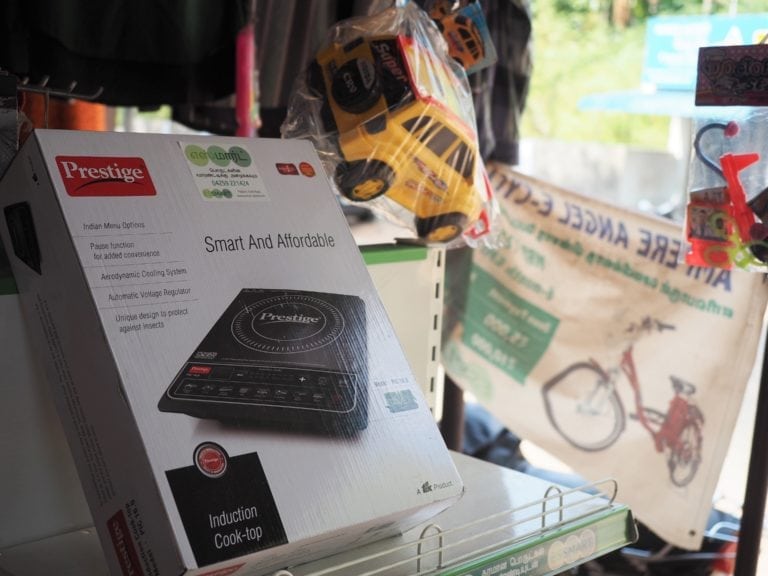Distribution can be the highest hurdle in technology development in areas where resources are scarce. Convincing people to buy and use an unfamiliar device is a hard sell anywhere, but the problem is compounded when the customers earn less than $2 per day and the salespeople are foreigners.
Aqua Clara International has found a way to side-step some distribution issues and create jobs in the process. The non-profit organization promotes the use of water filters in developing regions and leaves sales to local entrepreneurs. ACI trains and finances a local manufacture, sales and education force. It’s a simple distribution plan for relatively simple filtration and storage technologies. This is how they do it.
ACI at a glance
ACI develops and promotes biosand filters and hollow-fiber membrane filters, the latter of which can treat water laced with contaminants such as arsenic and fluoride. Its “flagship” biosand filters for homes treat about 40 liters per day, last about 10 years and cost roughly $12 to $15, depending on the expenses in the regions where they sell.
The Michigan-based organization has operations in Kenya and Nicaragua, where it has distributed nearly 5000 filters. Through affiliates, ACI’s filters are available in dozens of other countries.
Their efforts can save lives. The World Health Organization estimates that 1 billion people lack access to safe water, and about 2 million people die each year from diarrhea attributed in large part to the water they drink. People who have a biosand filter in their homes, however, are about half as likely to contract diarrhea, according to a randomzed, controlled trial in the Dominican Republic.
The technology
ACI has made small tweaks to the traditional biosand filter to try to reduce its cost and boost its efficacy. A biosand filter is basically a tub of sand and gravel with an outlet tube placed in the bottom. The user pours water into the top of the container, it passes through a perforated diffusion plate and into a column of sand where it slowly trickles down, leaving contaminants behind. The device is called “biosand” because a film of living microbes forms in the upper three to four inches of sand and acts as a first layer of filtration.
The filters reduce up to 96.5 percent of bacteria, 70 to 99 percent of viruses, and nearly 100 percent of protozoa and helminths, according to laboratory tests by the Centre for Affordable Water and Sanitation Technology. That organization publishes a detailed construction guide and usage manual available for free online.
ACI’s version encases the device in a large, low-cost plastic bucket and adds a disinfectant layer of granulated brass. The brass adds only a slight bump in performance, but it also plays a role in quality control, says Scott Rumpsa, director of ACI’s program in Kenya.
Decentralized distribution
Rumpsa and his team help train the people who build, sell, install and teach customers about the use and maintenance of the filters. These decentralized groups of entrepreneurs work in their own communities so ACI can have local representation.
“The goal is to have a local expert who remains in the area, motivated by income, even after we leave,” Rumpsa says. “As we get things started, we organize all supplies for the biosand filters and only require repayment of material costs after each filter is sold.”
ACI negotiates materials costs from local suppliers, buying in bulk at a discounted rate. The local distributors earn about $3 each from the sale of the filters. As part of the service that ACI provides, community health workers visit the filter buyers’ homes up to three times throughout two years after purchase to provide assistance.
The brass disinfectant additive provides a lever by which ACI can control the manufacturers.
“We supply this small outside material, and therefore can cut off a filter builder if they don’t maintain high construction and oversight standards,” Rumpsa told E4C.
Changes and challenges
ACI continues to research improvements to its filters. Future generations may include more of the brass alloy and do away with the biolayer altogether.
On the distribution front, the organization uses its local networks to sell safe water storage containers and simple handwashing stations. They also hold hygiene clubs for school children, and the schools double as sites for community demonstrations that can draw crowds, Rumpsa says.
In a decentralized scheme, quality can vary, so Rumpsa’s team has started smoothing over inconsistencies by centralizing some of the materials preparation. They now sieve the sand and gravel before delivering it to the filter builders, for example. The visiting health workers are also a part of the new quality-control effort.
ACI has hit on a plan that appears to work. The program in Kenya is in its third year, and this year it’s projected to double in size. Though the effort is relatively new, ACI appears to adjust nimbly to its experience. And, at this point, its distribution model may be a valuable case study in success. For more information, please see ACI’s website, aquaclara.org.
[Thumbnail image by John “K” / Flickr]



I am from Jajpur,state-Odisha,Pin- 755001(india).people of the area about 60% are under poverty line.because want of pure drinking water many people specially children of the underpriviledged class suffer from serious diseases mostly of uncurable type.today i saw from “z”tv 2 delhi school girls distributing 60 nos water p filters in the slum areas of delhi.that induced me to try & take steps for such type of work in our locality.i would therefore request to choose cheap but safe variety w/f for the purpose.
The figures stated in here are really alarming. I am shooked by the thought that even after so much of advancement in the technological field there still are people who do not have access to clean, drinking water. We really should do our own efforts in order to make the conditions better. Thanks a lot for sharing this article, this needs to be shared a lot.